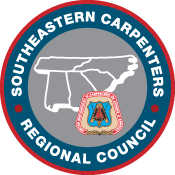


The Southeast has many healthcare facilities, and the Agency for Health Care Administration (AHCA) projects that construction work in this sector will triple in the next five years. But, because of tight budgets, more providers opt for remodeling instead of building new, and that shift creates new challenges and serious risks.


Carpenters at Work and in Action

Floorcovering companies can adopt ICRA standards and training to protect patients as COVID cases rise

ICRA Construction: Best Practices
Thousands of patients fall victim every year to infections caused by dust stirred-up during renovation projects. Inadequate procedures at the jobsite can release contaminants trapped above ceilings, behind walls or under floors, allowing them to infiltrate patient and staff environments via HVAC systems, foot traffic, and other conduits.
About 100,000 people die each year in the USA from healthcare facility-acquired infections, and medical costs to battle the illness hovers around $45 billion a year, according to the U.S. Centers for Disease Control and Prevention.
Southeastern carpenters are addressing this problem by elevating training. We’ve created a typical health facility mockup that reflects real-time working conditions of a medical center. This real-time prop mimics patient rooms, labs, exam rooms, waiting rooms, and other venues found in a healthcare facility.
The foundation of our training is the UBC’s proprietary and industry-heralded Construction ICRA: Best Practices in Healthcare Construction program. The curriculum was developed with leading construction-related infection control experts around the country. Study focuses on how to remain productive within construction ICRA protocols via combined hands-on, classroom, and simulation training.
Southeastern Carpenters trained in this program have superior skills needed work safely without disrupting operations — all while keeping a project on budget and on schedule.
When a Southeastern carpenter successfully completes the 24-hours of coursework and testing, he or she earns two qualification cards: Best Practices in Healthcare Construction and Blood-Borne Pathogens. Maintaining the Best Practices credentials requires ongoing refresher courses and re-certification every four years. Maintaining the blood borne pathogens Qualification Card requires annual re-certification.
Our relationships with contractors and health-facility owners enable us to also offer an 8-hour awareness course for healthcare workers and other skilled trades, so they, too, understand construction ICRA. We envision a total construction team effort to meet and exceed construction ICRA standards.
All of this training is active and ongoing here in the Southeastern Carpenters Regional Council. For more information or to get a list of Southeastern contractors who hire ICRA-trained carpenters, contact us.
Training focuses on how to contain pathogens, control airflow, and protect patients and staff. Training creates understanding of the ICRA form, working with the facility on their Interim Life Safety Measures and construction ICRA. Our training includes:


Our Construction ICRA Awareness Course teaches why construction ICRA must be followed and how everyone fits into the total ICRA construction picture. Upon successful completion of this workshop, the participant can:
A blue badge, specifically designed for the Southeastern carpenter, is worn to quickly identify a carpenter who has been properly trained in 24-hour Construction ICRA protocol.
A separate red badge ID’s the 8-hour trained individual.
Expiration dates of training gives supervisors a quick look at who is current and who is nearing re-training status.
mimbrigiotta@secarpenters.org
912-244-0796